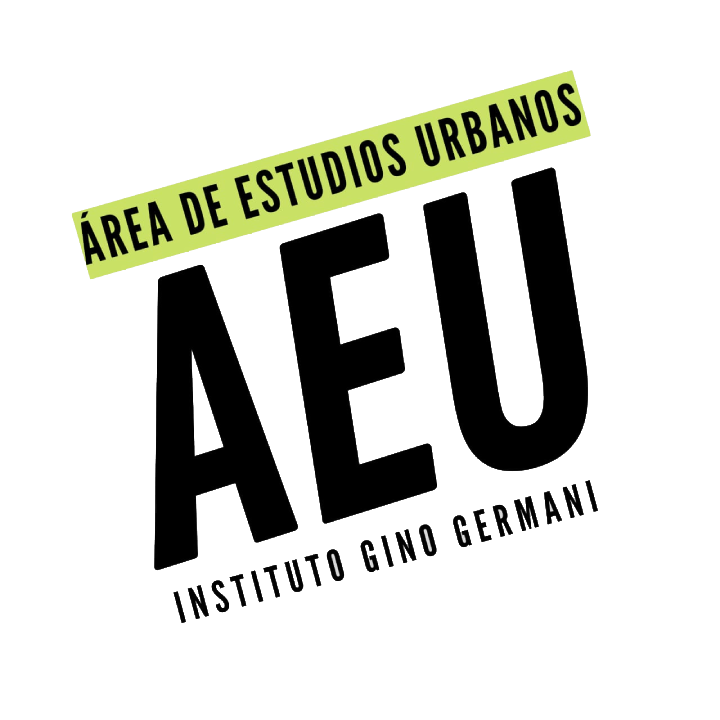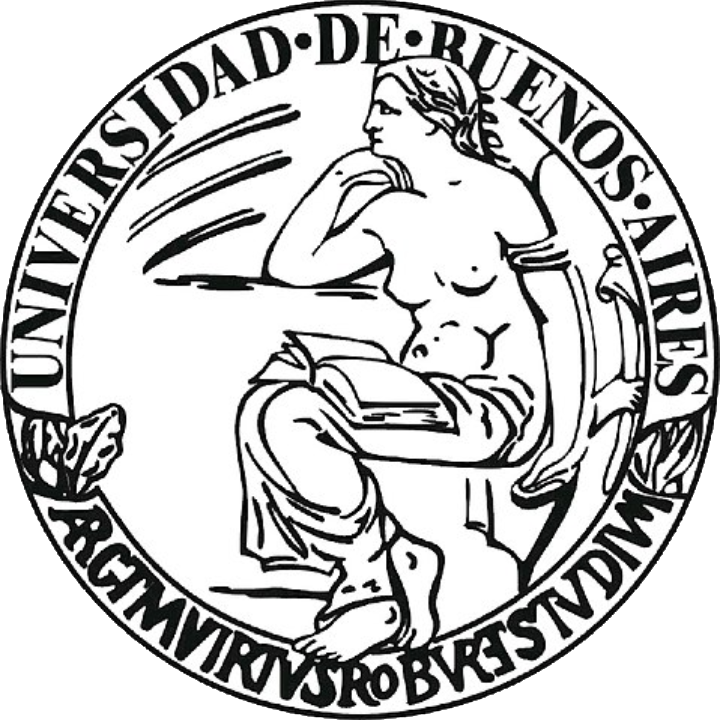Movilidades periféricas en Bogotá: hacia un nuevo paradigma
Resumen
En las últimas décadas, las ciencias sociales han vivido una significativa transformación basada en un ‘nuevo paradigma de la movilidad’, enfocado en las diferentes formas de movilidad que están transformando el espacio y la sociedad. Sin embargo, la perspectiva de dicho paradigma considera teorías, fenómenos y métodos que se refieren principalmente a contextos del Norte Global, así, éste va reduciendo su valor epistemológico para el Sur Global. El articulo pretende discutir el valor epistemológico y operacional del nuevo paradigma de la movilidad desde la perspectiva del Sur, asumiendo un enfoque en las prácticas cotidianas de movilidad y acceso, utilizándolas para discutir cuales características u adaptaciones serian relevantes para comprender y enfrentar formas emergentes de movilidad en el Sur Global. Consciente de las múltiples realidades que componen el Sur Global, el articulo escoge enfocarse en el contexto de Bogotá, debido a sus celebradas experiencias en el campo de las políticas para la movilidad urbana: la ciudad ha promovido ingentes inversiones en el transporte público inspiradas por un explícito compromiso social, que sin embargo han beneficiado solo parcialmente las periferias. La discusión se funda en relatos de movilidades cotidianas en dos barrios periféricos de la ciudad para reconsiderar conceptos teóricos y diferentes formas de movilidad, evidenciando la relevancia de un nuevo paradigma de las movilidades revisitado desde las periferias de una ciudad latinoamericana.
Palabras clave
Texto completo:
PDFReferencias
ALCALDÍA MAYOR DE BOGOTÁ. (2016). Población de Bogotá D.C. y sus localidades. Bogotá. Disponible a http://www.sdp.gov.co/portal/page/portal/PortalSDP/InformacionTomaDecisiones/Estadisticas/ProyeccionPoblacion:Proyecciones de Poblaci%F3n
ALCALDÍA MAYOR DE BOGOTÁ (2017). Encuesta de movilidad 2015. Bogotá.
ANGELO, H., y WACHSMUTH, D. (2015). Urbanizing urban political ecology: A critique of methodological cityism. International Journal of Urban and Regional Research, 39(1), 16–27. https://doi.org/10.1111/1468-2427.12105
ARDILA-GÓMEZ, A. (2004). Transit Planning in Curitiba and Bogotá. Roles in Interaction, Risk, and Change. Massachusetts Institute of Technology.
ARDILA-GÓMEZ, A. (2008). Limitation of Competition in and for the Public Transportation Market in Developing Countries: Lessons from Latin American Cities. Transportation Research Record: Journal of the Transportation Research Board, 2048, 8–15. https://doi.org/10.3141/2048-02
AVELLANEDA, P., y LAZO, A. (2011). Aproximación a la movilidad cotidiana en la periferia pobre de dos ciudades latinoamericanas. Los casos de Lima y San tiago de Chile. Revista Transporte y Territorio, (4), 47–58.
BOCAREJO, J. P., ESCOBAR, D., OVIEDO, D., y GALARZA, D. (2016). Accessibility analysis of the integrated transit system of Bogotá. International Journal of Sustainable Transportation, 10(4), 308–320. https://doi.org/10.1080/15568318.2014.926435
BOCAREJO, J. P., GUZMAN, L. A., PORTILLA, I., MELENDEZ, D., GOMEZ, A. M., y RIVERA, C. I. (2017). The access as determinant variable on residential location choice of low-income households in Bogota. Transportation Research Procedia, (July 2016), 1–23.
BOCAREJO, J. P., y OVIEDO, D. (2012). Transport accessibility and social inequities: a tool for identification of mobility needs and evaluation of transport investments. Journal of Transport Geography, 24, 142–154. https://doi.org/10.1016/j.jtrangeo.2011.12.004
BRENNER, N., y SCHMID, C. (2015). The epistemology of urban morphology. City, 19(2–3), 151–182. https://doi.org/10.1080/13604813.2015.1014712
BRIATA, P., BRICOLI, M., y BOVO, M. (2018). Un bus come spazio pubblico. Multiculturalismo ed Etnografia Urbana a Milano. REMHU: Revista Interdisciplinar Da Mobilidade Humana, 26(52), 167–188. https://doi.org/10.1590/1980-85852503880005210
BÜSCHER, M., y URRY, J. (2009). Mobile Methods and the Empirical. European Journal of Social Theory, 12(1), 99–116. https://doi.org/10.1177/1368431008099642
CANZLE, W., KAUFMANN, V., y KESSELRING, S. (Eds.). (2008). Tracing mobilities. Farnham: Ashgate.
CASS, N., y FAULCONBRDGE, J. (2016). Commuting practices: New insights into modal shift from theories of social practice. Transport Policy, 45, 1–14. https://doi.org/10.1016/j.tranpol.2015.08.002
CASS, N., SHOVE, E., y URRY, J. (2005). Social exclusion, mobility and access. Sociological Review, 53(3), 539–555. https://doi.org/10.1111/j.1467-954X.2005.00565.x
CESAFSKY, L. (2017). How to Mend a Fragmented City: a Critique of ‘Infrastructural Solidarity’’.’ International Journal of Urban and Regional Research. https://doi.org/10.1111/1468-2427.12447
CRESSWELL, T. (2006). On the Move: Mobility in the Modern Western World. London: Routledge.
CRESSWELL, T. (2010). Towards a politics of mobility. Environment and Planning D: Society and Space, 28(1), 17–31. https://doi.org/10.1068/d11407
CRESSWELL, T., y MERRIMAN, P. (Eds.). (2011). Geographies of Mobilties: Practices, Spaces, Subjects. Farnham: Ashgate.
DANE. (2017). Estratificación socioeconómica para servicios públicos domiciliarios. Disponible a http://www.dane.gov.co/index.php/servicios-al-ciudadano/servicios-de-informacion/estratificacion-socioeconomica
FERREIRA, A., BERTOLINI, L., y NAES, P. (2017). Immotility as resilience? A key consideration for transport policy and research. Applied Mobilities, 2(1), 16–31. https://doi.org/10.1080/23800127.2017.1283121
FIGUEROA, O. (2005). Transporte urbano y globalización. Políticas y efectos en América Latina. Revista EURE - Revista de Estudios Urbano Regionales, 31(94).
FIGUEROA, O. (2013). Infraestructuras de transporte terrestre, ciudad y movilidad en América Latina. In J. Erazo Espinosa (Ed.), Infraestructuras urbanas en América Latina: gestión y construcción de servicios y obras públicas (pp. 243–266). Quito: Editorial IAEN.
FLAMM, M., y KAUFMANN, V. (2006). Operationalising the Concept of Motility: A Qualitative Study. Mobilities, 1(2), 167–189. https://doi.org/10.1080/17450100600726563
GARCÍA JEREZ, F. A. (2016). La movilidad socio-espacial desde la teoría de Pierre Bourdieu: capital de motilidad, campo de movilidad y habitus ambulante. Sociedad y Economía, (31), 15–32.
GARCÍA MÁRQUEZ, G. (1961). El coronel no tiene quien le escriba. Medellín: Aguirre.
GILBERT, A. (2008). Bus Rapid Transit: Is Transmilenio a Miracle Cure ? Transport Reviews, 28(4), 439–467. https://doi.org/10.1080/01441640701785733
GILBERT, A. (2015). Urban governance in the South: How did Bogotá lose its shine? Urban Studies, 52(4), 665–684. https://doi.org/10.1177/0042098014527484
GOUËSET, V., DEMORAES, F., LE ROUX, G., FIGUEROA, O., y ZIONI, S. (2014). Recorrer la Metrópoli. Prácticas de movilidad cotidiana y desigualdades socio-territoriales en Bogotá, Santiago de Chile y São Paulo. In F. (Françoise) Dureau, T. Lulle, S. Souchaud, Y. Contreras, & S. Zioni (Eds.), Movilidades y cambio urbano: Bogotá, Santiago y São Paulo (pp. 303–344). Bogotá: Universidad Externado de Colombia.
GUERRERO ARCINIEGAS, C. (2016). Todo listo para el cable a Ciudad Bolívar. El Espectador. Disponible a http://www.elespectador.com/noticias/bogota/todo-listo-el-cable-ciudad-bolivar-articulo-643590
GUTIÉRREZ, J., y GARCÍA PALOMARES, J. C. (2008). Distance-Measure Impacts on the Calculation of Transport Service Areas Using GIS. Environment and Planning B: Planning and Design, 35(3), 480–503. https://doi.org/10.1068/b33043
GUZMAN, L. A., OVIEDO, D., y BOCAREJO, J. P. (2017). City profile: The Bogotá Metropolitan Area that never was. Cities, 60, 202–215. https://doi.org/10.1016/J.CITIES.2016.09.004
HANNAM, K., SHELLER, M., y URRY, J. (2006). Editorial: Mobilities, Immobilities and Moorings. Mobilities, 1(1), 1–22. https://doi.org/10.1080/17450100500489189
HERES, D. R., DARBY, J., y SALON, D. (2009). Do public transport investments promote urban economic development? Evidence from bus rapid transit in Bogotá, Colombia. Transportation, 41, 57–74. https://doi.org/10.1007/s11116-013-9471-8
HIDALGO, D., PEREIRA, L., ESTUPIÑAN, N., y JIMÉNEZ, P. L. (2013). TransMilenio BRT system in Bogotá, high performance and positive impact - Main results of an ex-post evaluation. Research in Transportation Economics, 39(1), 133–138. https://doi.org/10.1016/j.retrec.2012.06.005
JANACUA BENITES, J., y GARCÍA RODRIGUEZ, R. E. (2013). Interacción social y transporte público: Erving Goffman en la combi. URBS: Revista de Estudios Urbanos y Ciencias Sociales. Volúmen 3, Número 01, 2013, 3(1).
JOSHIi, A., y MOORE, M. (2004). Institutionalised Co-production: Unorthodox Public Service Delivery in Challenging Environments. Journal of Development Studies, 40(4), 31–49. https://doi.org/10.1080/00220380410001673184
JOUFFE, Y. (2011). Las clases socio - territoriales entre movilidad metropolitana y repliegue barrial. ¿Tienen los pobladores pobres una movilidad urbana de clase? Revista Transporte y Territorio, 4, 84–117.
JOUFFE, Y., y LAZO CORVALÁN, A. (2010). Las prácticas cotidianas frente a los dispositivos de la movilidad: Aproximación política a la movilidad cotidiana de las poblaciones pobres periurbanas de Santiago de Chile. EURE, 36(108), 29–47. https://doi.org/10.4067/S0250-71612010000200002
KAUFMANN, V. (2002). Re-Thinking Mobility. Farnham: Ashgate.
KAUFMANN, V. (2014). Mobility as a Tool for Sociology. Sociologica, 1.
KAUFMANN, V., BERGMANN, M. M., y JOYE, D. (2004). Motility: Mobility as Capital. International Journal of Urban and Regional Research, 28(4), 745–756.
KENYON, S., LYONS, G., y RAFFERTY, J. (2002). Transport and social exclusion: Investigating the possibility of promoting inclusion through virtual mobility. Journal of Transport Geography, 10(3), 207–219. https://doi.org/10.1016/S0966-6923(02)00012-1
LARSEN, J., AXHAUSEN, K. W., y URRY, J. (2006). Geographies of social networks: meetings, travel and communications. Mobilities, 1(2), 261–283. https://doi.org/10.1080/17450100600726654
LEE, D. (2015). Absolute Traffic: Infrastructural Aptitude in Urban Indonesia. International Journal of Urban and Regional Research, 39(2), 234–250. https://doi.org/10.1111/1468-2427.12212
LEON BORJA, L. (2015). Fachadas bogotanas. Bogotá: Milserifas.
LOTERP, L., CADILLO, A., HURTADO, R., y GÓMEZ GARDENES, J. (2014). Socioeconomic differences in urban mobility. In A. Garas (Ed.), Interconnected networks. Berlin: Springer.
LUCAS, K. (2012). Transport and social exclusion: Where are we now? Transport Policy, 20, 105–113. https://doi.org/10.1016/j.tranpol.2012.01.013
MARTENS, K. (2017). Why accessibility measurement is not merely an option, but an absolute necessity. In N. Punto & A. Hull (Eds.), Accessibility tools and their applications. New York - London: Routledge.
MOMTEZUMA, R. (2003). Ciudad y transporte: la movilidad urbana. In M. Balbo, R. Jordán, & D. Simioni (Eds.), La ciudad inclusiva (pp. 175–192). Santiago de Chile: CEPAL.
MORENO LUNA, C. A. (2016). Segregación en el espacio urbano de Soacha ¿Transmilenio como herramienta integradora? Revista de Arquitectura, 18(1), 48–55. Disponible a http://www.redalyc.org/pdf/1251/125146891005.pdf
MORENO LUNA, C. A., y RUBIANO BRÍÑEZ, M. (2014). Segregación residencial y movilidad cotidiana en el contexto metropolitano. Un estudio a partir de las relaciones Bogotá-Soacha. Territorios, (31), 133–162. Disponible a http://www.redalyc.org/html/357/35732479007/
OVIEDO, D., y TITHERIDGE, H. (2016). Mobilities of the periphery: Informality, access and social exclusion in the urban fringe in Colombia. Journal of Transport Geography, 55, 152–164. https://doi.org/10.1016/j.jtrangeo.2015.12.004
OVIEDO HERNANDEZ, D., y DÁVILA, J. D. (2016). Transport, urban development and the peripheral poor in Colombia — Placing splintering urbanism in the context of transport networks. Journal of Transport Geography, 51(January), 180–192. https://doi.org/10.1016/j.jtrangeo.2016.01.003
PERRET MARINO, G., y SOLDANO, D. (2017). La movilidad en cuestión. Aportes para un diálogo interdisciplinario. In D. Soldano (Ed.), Viajeros del conurbano bonaerense. Una investigación sobre las experiencias de movilidad en la periferia (pp. 25–60). Los Polvorines: Ediciones Universidad Nacional de General Sarmiento.
Preston, J., & Rajé, F. (2007). Accessibility, mobility and transport-related social exclusion. Journal of Transport Geography, 15(3), 151–160. https://doi.org/10.1016/j.jtrangeo.2006.05.002
RAMÍREZ VELÁZQUEZ, B. R. (2007). Del suburbio y la periferia al borde: el modelo de crecimiento de la Zona Metropolitana del Valle de México (ZMVM). L’Ordinaire Des Amériques, (207), 69–89. https://doi.org/10.4000/orda.3350
RODRÍGUEZ VIGNOLI, J. (2008). Movilidad cotidiana, desigualdad social y segregación residencial en cuatro metrópolis de América Latina. EURE, 34(103), 49–71. https://doi.org/10.4067/S0250-71612008000300003
ROY, A. (2016). Who’s Afraid of Postcolonial Theory? International Journal of Urban and Regional Research, 40(1), 200–209. https://doi.org/10.1111/1468-2427.12274
SAGER, T. (2006). Freedom as Mobility: Implications of the Distinction between Actual and Potential Travelling. Mobilities, 1(3), 465–488. https://doi.org/10.1080/17450100600902420
SALCEDO FIDALGO, A. (2015). Víctimas y trasegares: forjadores de ciudad en Colombia 2002-2005. Bogotá: Universidad Nacional de Colombia.
SHELLER, M. (2011). Mobility. In Sociopedia.isa.
SHELLER, M., y URRY, J. (2003). Mobile Transformations of `Public’ and `Private’ Life. Theory, Culture & Society, 20(3), 107–125. https://doi.org/10.1177/02632764030203007
SHELLER, M., y URRY, J. (2006). The new mobilities paradigm. Environment and Planning A, 38(2), 207–226. https://doi.org/10.1068/a37268
SHELLER, M., y URRY, J. (2016). Mobilizing the new mobilities paradigm. Applied Mobilities, 1(1), 10–25. https://doi.org/10.1080/23800127.2016.1151216
SIMONE, A. (2010). A Town on Its Knees? Theory, Culture & Society, 27(7–8), 130–154. https://doi.org/10.1177/0263276410383708
SOLDANO, D., y PERRET MARINO, G. (2017). Movilidad y subjetividad. Viajes y experiencias del espacio en los bordes de la ciudad. In D. Soldano (Ed.), Viajeros del conurbano bonaerense : una investigación sobre las experiencias de movilidad en la periferia (pp. 173–222). Los Polvorines: Ediciones Universidad Nacional de General Sarmiento.
STANLEY, J., y VELLA BRODRICK, D. (2009). The usefulness of social exclusion to inform social policy in transport. Transport Policy, 16(3), 90–96. https://doi.org/10.1016/j.tranpol.2009.02.003
BRÖMMELSTROET, M. (2014). Sometimes you want people to make the right choices for the right reasons: Potential perversity and jeopardy of behavioural change campaigns in the mobility domain. Journal of Transport Geography, 39, 141–144. https://doi.org/10.1016/j.jtrangeo.2014.07.001
URRY, J. (2000). Sociology Beyond Societies: Mobilities for the Twenty-First Century. Abingdon: Routledge.
URRY, J. (2007). Mobilities. Cambridge: Polity Press.
VAN WEE, B. (2011). Transport and Ethics: Ethics and the Evaluation of Transport Policies and Projects. Celtenham: Elgar.
VECCHIO, G. (2017). Democracy on the move? Bogotá’s urban transport strategies and the access to the city. City, Territory and Architecture, 4(15), 1–15. https://doi.org/10.1186/s40410-017-0071-3
VECCHIO, G. (2018a). Producing Opportunities Together: Sharing-Based Policy Approaches for Marginal Mobilities in Bogotá. Urban Science, 2(3), 54. https://doi.org/10.3390/urbansci2030054
VECCHIO, G. (2018b). Urban mobility as human capability. Bridging the gap between transport planning and individual opportunities. Politecnico di Milano. Disponible a https://www.politesi.polimi.it/handle/10589/139243
WATTS, L., y URRY, J. (2008). Moving methods, travelling times. Environment and Planning D: Society and Space, 26, 860–874. https://doi.org/10.1068/d6707
YIFTACHEL, O. (2006). Re-engaging Planning Theory? Towards “South-Eastern” Perspectives. Planning Theory, 5(3), 211–222. https://doi.org/10.1177/1473095206068627
ZAHAVI, Y. (1974). Traveltime Budgets and Mobility in Urban Areas. Final Report. Washington.
Enlaces refback
- No hay ningún enlace refback.
Estadísticas
Visitas al Resumen:777
PDF:177
Quid16. Revista del Área de Estudios Urbanos. ISSN: 2250-4060.
Los trabajos publicados en esta revista están bajo licencia Creative Commons Attribution 4.0 International.







